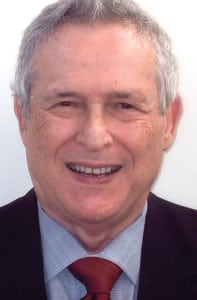
Being asked to participate in a creative session for the first time can be exhilarating. It often provides first-timers an opportunity to show their creative ability to the higher-ups. Conversely, it can also pigeon-hole a junior account executive as “not being creative,” even though a person shouldn’t be judged on one poor performance.

Here are some ways to make sure that you will shine during your first creative session.
Do:
- Read the information about the creative session that is provided before going to the session and jot down any questions that you may want to ask the facilitator. Ask them at the beginning of the session.
- Think of tactics that you would want in a program if you were the account supervisor. Use those elements as the basis of your creative suggestions.
- Make sure that your suggestions do not distract from the main objective of the program.
- Make sure that your suggestions are doable. (Creative ideas that are not marketable are bad ideas.)
- Suggest elements that build on other’s ideas. All your suggestions do not have to stand alone.
- Think of other programs that you know of and see if any of the creative approaches in those make sense to suggest.
- Be selective with suggestions. One good idea is more important than several mediocre ideas.
- Only suggest ideas that fit the client’s profile.
Don’t:
- Arrive late.
- Ignore your account responsibilities in order to attend the creative session; explain to the facilitator why you want to be excused and invited to another creative session.
- Cut someone off from presenting what you think is a ridiculous idea.
- Be shy about praising someone else’s idea.
- Try to hog the meeting.
- Remain silent throughout the meeting.
- Be an echo and rephrase ideas suggested by others.
- Discuss your ideas with a colleague prior to the session. (Doing so will prevent someone from regurgitating your idea before you present it.)
- Rush to be the first person to suggest a creative approach. Hearing other’s thoughts first can provide you with new and better ideas and ways to refine ideas that you may have considered earlier.
- Stop thinking once the creative session is over. If you think of any approaches after the meeting, then suggest them to the facilitator.
Always:
Write down all ideas presented and file them away. Refer to them prior to other creative sessions. Often they can make sense for other programs (including accounts you supervise).
Lessons to Remember:
- A creative idea is only good if it is doable within the client’s budget. Suggesting million dollar ideas for a $250,000 budget is a sure way to have you regarded as a non-creative person.
- Not all great creative approaches have to be original. Often being able to modify creative ideas from past programs work.
- If you find your good ideas being used in various programs, but buried in “team concept memos” find ways to let top management know that they were yours. As a very senior executive told me after my ideas were part of “team concept” memos for a few years, “Arthur, you better find a way to let top management know about your contributions because if you don’t take credit for your work, others will.” I took his suggestion and my career took off.
Arthur Solomon was a senior vice president/senior counselor at Burson-Marsteller and remains a frequent contributor to public relations and sports business publications. He consults on public relations projects and is on the Seoul Peace Prize nominating committee. He can be reached at [email protected].
